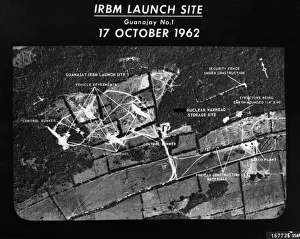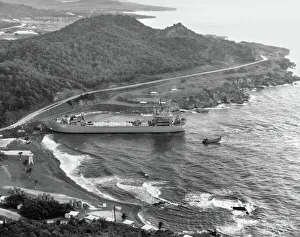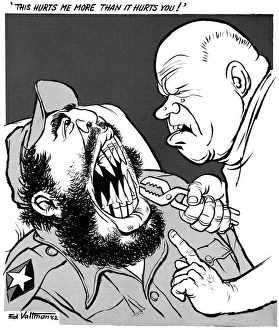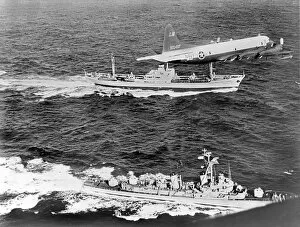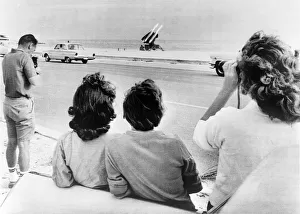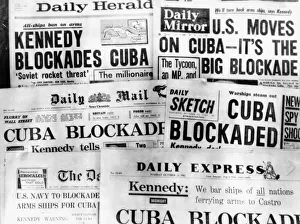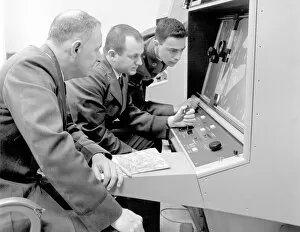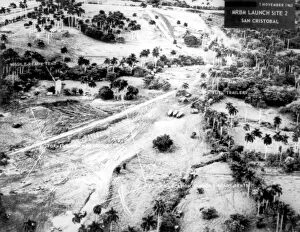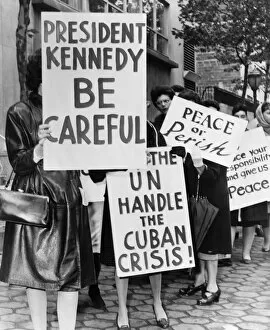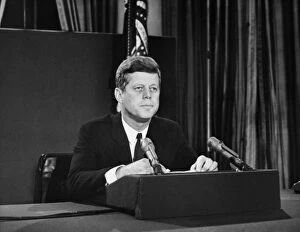Cuban Missile Crisis Collection
"The Cuban Missile Crisis: A Tense Standoff That Shook the World" In this U. S
All Professionally Made to Order for Quick Shipping
"The Cuban Missile Crisis: A Tense Standoff That Shook the World" In this U. S. Air Force photograph taken on October 17, 1962, we catch a glimpse of the launch site of intermediate-range ballistic missiles (IRBMs) at Guanajay, Cuba. Little did the world know that these very missiles would soon become the center of an intense standoff between two superpowers. Fast forward to November 2, 1962, and we witness the USS Terrebonne Parish tank landing ship docking at Windmill Beach in Guantanamo Bay, Cuba. This moment captures a crucial aspect of the Cuban Missile Crisis – naval movements and preparations that added fuel to an already volatile situation. The JFK Cuba Blockade was implemented as tensions escalated further. The President's decision to establish a naval quarantine around Cuba aimed to prevent Soviet ships from delivering additional weapons or supplies. It was a bold move that brought both nations closer to the brink of war. Meanwhile, in New York City during this critical time in history, women from Women Strike for Peace took their stand for peace near the United Nations building on 47th Street. Holding placards relating to the crisis and advocating for peace, they were part of a larger group comprising 800 women strikers who believed in finding peaceful resolutions amidst escalating tensions. The pain and anxiety caused by this crisis were felt worldwide; it hurt everyone involved more than they could imagine. Headlines screamed about missiles on Florida's coast and highlighted every development surrounding what became known as "Cuban Missile Crisis. " Protesters took to streets across America demanding de-escalation and urging leaders towards diplomacy rather than warfare. Through aerial views captured by analysis C016 /4236 and C016 /4235 photographs during those tense days in October 1962 when humanity held its breath collectively; we gain insight into just how close we came to catastrophe.

